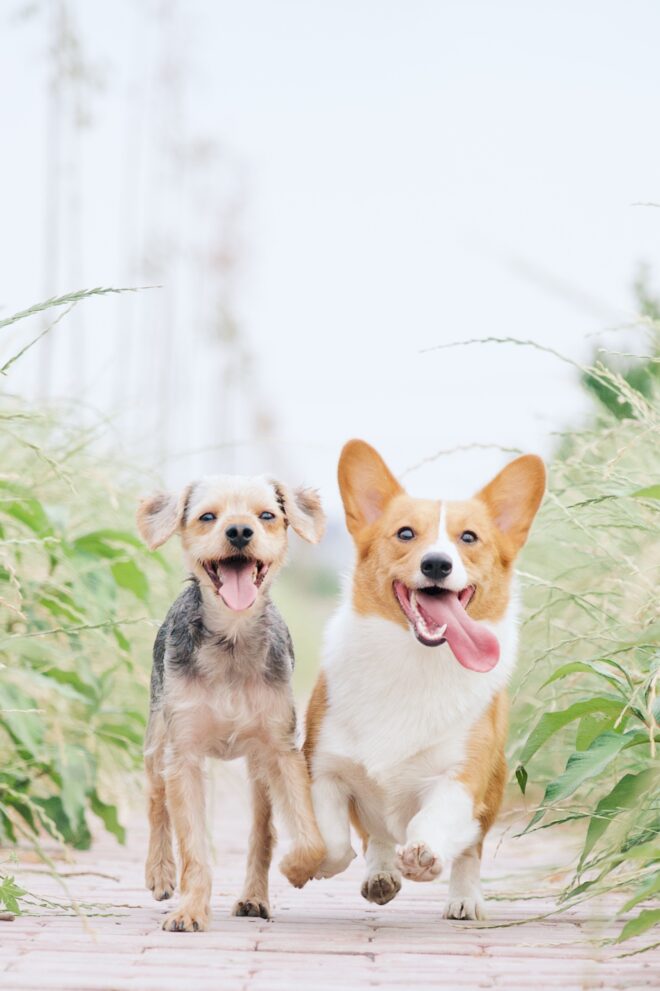Winter won’t stop pets! It’s true to say that a bit of wind, rain and snow is no match for our four-pawed fluffies and their desire to explore the outside world. However, winter does come with some warnings for cats and dogs alike. Below, we discuss some of these chilly winter challenges, complete with tips on how you, as a dedicated owner, can help your pet enjoy some winter adventures safely and comfortably. Here are our top five seasonal tips for this winter:
1. Get ready for grit salt.
Grit salt saves lives and is a much-needed safety component of winter-readiness on the roads. But have you heard about grit salt toxicity in pets? Pets can ingest an excess of salt when licking contaminated paws after a winter walk on roads and footpaths. Once swallowed, this salt causes high sodium concentrations in the bloodstream. What results at the milder end of the scale is excessive thirst, vomiting and lethargy, and at the more severe end of the scale, kidney disease and convulsions.
There is a simple resolution to this; bathe a pet’s paws after each outdoor encounter. Use warm (but not hot) water and a mild shampoo on both cats and dogs, and pat dry gently. For the pampered pooches out there, why not go a step further and treat them to a slick of moisturising balm to protect and soften their pads afterwards? Since salt tends to dry pads out, Dermoscent Biobalm, can really help.
2. Avoid antifreeze poisoning.
Another winter staple for keeping our cars moving in icy temperatures, unfortunately spills and leaks of ethylene glycol-containing antifreeze sometimes occur. Sadly, pets will sample this strange-tasting fluid if they encounter it and the scary thing is that it doesn’t take much to poison them. Incoordination, excessive thirst/urination, vomiting, and seizures are some potential symptoms; this toxicity can also be fatal.
If you suspect your pet to have ingested any antifreeze at all, get in touch with your vet immediately. If you spill it directly upon your pet, or it gets on their fur another way, prevent them from licking themselves clean and bathe them straight away. Again, using a shampoo such as Aloeze will help remove this toxic substance before it’s too late.
3. Avoid winter walking woes.
Light your dog up like a Christmas tree to ensure they can be seen, both in traffic and whilst careering around the park. These safety lights attach to their collar or harness and will do just the trick.
Why not also prepare for slippery conditions by perfecting your pooches’ lead-walking skills? Avoid overzealous hounds hauling you around, because no one likes to take a tumble on ice.
And finally, warm your woof up after a wet winter walk by drying them with a towel. Choose one which is highly absorbent such as the Henry Wag Noodle Glove Towel to ensure they don’t catch a chill after being out and about. Go one step further, especially for short-coated breeds and the old or young, by investing in a drying coat; leave them cosy, and your house clean. See here for an excellent example.
4. Keep pets frostbite-free.
We’ve all seen toe ball snowballs of freezing ice and snow caught between the pads and digits of our four-legged friends. If left, they can cause spreading and cracking of the skin, as well as chilling the skin down to uncomfortable temperatures, causing damage in this way. The temptation might be snip them out; scissors are not your friend here for fear of accidentally catching the skin in these tricky to see areas.
Tepid water, bathing, and perhaps a post-bath skin balm (as mentioned above) are, however. In super-hairy-toed breeds, it might be worth considering clipping out the fur between the digits; these Pico Trimmers from Lister are extremely small and nimble making them just the thing for the job.
5. Beware the winter spread.
As much as your pets won’t often be deterred by bad weather, there are some winter days that are too grim for even the most hardened of winter explorers. So, we must keep one eye on our pets’ body condition for all sorts of reasons including heart and joint health. Fortunately, it is as simple as being aware of the calories going in, versus calories being burned off. Low calorie treats, portion control, and indoor play encouragement are your best weapons in the fight against winter fat. Talk to your vet if you are concerned because low-calorie diets are also available.
Whatever you and your pets plan to get up to, we hope that these simple tips help you to have a safe and happy winter.





